#a guide to ogam divination
Text
Book Review of 'A Guide to Ogam Divination' by Marissa Hegarty

I was thrilled when I bought this book. I was so excited to crack it open and read it, I was excited to write this post and support an independent author who is out here putting in the work and turning out well researched information for budding and experienced pagans alike. It makes me incredibly sad to not be able to do that…
I found the first part of the book, here named "Theory" overly long, convoluted and mostly outside the professed scope of the book (that scope being named as divination). This criticism comes from someone who is enamored by linguistic history and therefore should have found this section as fascinating as any other. However, for example, while I appreciate the author's apparent desire to assure the reader that ogam existed prior to the overwhelming establishment of Christianity in Ireland and therefore was almost certainly a product of a pagan thinking mind as opposed to a Christian one, this point was ultimately very simple to get to and did not require as much time and effort as the author put into it (about 35 pages, taking into account the section on ogam stones which set up the section for this point, likely 10 or so would have done just fine).
I also found myself really struggling to connect with the authors take in many aspects of this section. Few points make sense to me, perhaps in part or in whole do to the author's seemingly random use of citations. Such as one point when the ages of Auraicept na nÉces and In Lebor Ogaim might be cited (though even then it is sometimes difficult to decipher exactly WHAT point is actually being cited), while elsewhere a reference is made to what is apparently a manuscript containing the earliest complete use of Ogam, yet there is no citation for this (it is, presumably, sourced later in the text but with no mention of given either at the first introduction nor at the later account). Additionally, (while it is no fault of the author's) some aspects I could not independently verify at all because the articles/books referenced are unavailable and... apparently... not referenced anywhere else...
Moving on to the second section “practice”… there was very little information offered in this section that was new to a reader who already has read “Ogam: weaving word wisdom” by ERL and “Irealnd’s Trees: Myths, Legends and Folklore” by Niall MacCoitir…
Whats worst, in my personal opinion is that I never felt like the author ever took a stance on… well anything… each time I settled in to what the author was saying about any point at all I suddenly found them either arguing directly against that point in the very next paragraph and dismissing it wholly or after expressing a conflicting idea throwing up their hands and going "either might be true". While this is often done by writers on topics which can not have definitive answers there is a way to do it without giving your audience whiplash or living them feeling like the author themselves may not know what they're talking about and this author… unfortunately did not employ any of those methods.
I can not express enough how much I wanted to like this book and how much I wanted to support this budding author… but I found the whole experience ultimately unenjoyably and lacking any individual thought or additions…
#paganism#celtic#celtic paganism#celtic polytheism#ogam#ogham#book#books#a guide to ogam divination#Marissa Hegarty#book review#pagan#paganblr#blackcrowing
21 notes
·
View notes
Text
Behold the fairy mound before your eyes;
It is plain for you to see, it is a king’s dwelling,
It was built by the harsh Dagda:
It was a shelter, it was a keep renowned for strength.
Although the name is translated as ‘the harsh Dagda’ here (which is a perfectly valid interpretation), the range of other meanings that are suggested by dúr could be interpreted as equating dúr (or duir, as it’s sometimes spelled) with dair (also sometimes spelled duir), because dúr can be given to mean ‘hard, rigid, solid,’ but also ‘firm, resolute, hardy,’ which offers a perfect complement to the hardy qualities of the oak. In the context of the Dagda having built the brug itself (using construction materials like oak), where the strength of its fortifications are emphasised, a translation of ‘the steadfast Dagda’ would perhaps be more apt, or perhaps even ‘the oaken Dagda.’
– "A Guide to Ogam Divination" by Marissa Hegarty.
#ogham#ogam#damn the links between Dair and Tinne are makingnmy brain fire on ALL cylinders#lowkey this is helping slot into place a TON of UPG#im so thrilled to have found this book#i didnt know it wss being written#marissa hegarty#Dair#an Dagda
24 notes
·
View notes
Text
Meet the Magpie:
💝 Please don’t reblog, thank you 💝
🗓️ 9th April 2022
Personal
Name: You can call me Mag or Magz
Pronouns: She/Her, They/Them, or any mix of the 4
Age: 34
Signs: Sagittarius Sun, Virgo Moon, Libra/Scorpio Rising
Where: England
Magical Interests
Divination
Meditation
Spirit work
Animism
Crystals
Spell work
Some Of My Favourite Magic Blogs
@teawiththegods, @crazycatsiren, @teawitch, @will-o-the-witch, @windvexer, @stagkingswife, @libraford, @madamehearthwitch (inactive)
Some Of My Favourite Non-Magic Blogs
@rainbowd00dles, @gainux, @lozzykins, @chibird, @bekkathyst, @caspercryptid, @ponderation, @ladoescurodalua
Fun Facts
I often feel that I don’t practice enough to class as a witch, hence subverting a couple of things here lol...
My favourite colour is yellow.
I love ask box lists and games because in general I try to not think too much because I get into dangerous loops, but ask box games are brief enough that I can think on something but not fall too far down the rabbit holes of my own mind.
I can pin discovery of my fear of wet paint to the Sesame Street song titled (wait for it...) “Wet Paint”. The video gave me nightmares for years. I still don’t know why but even now that video, and the smell of wet paint, has a negative effect on me.
I fucking LOVE Furbies and still have mine, a Generation 2 Tiger.
It took me a ridiculously long time to realise that no, not all girls get excited to see naked breasts...
I was once so obsessed with Guild Wars that I accidentally started worshipping their Gods. I am still incredibly attached to the concepts of their Gods.
Guild Wars and OGame are the reasons I do not play video games any more.
Miscellaneous
Things I Do In My Downtime
Watch a LOT of TV shows, movies, and YouTube videos
Read - though usually books I’ve read before
Try to learn Spanish via Duolingo
Browse tumblr... like... a lot...
15 Favourite Movies
A Nightmare on Elm Street (all), Angry Birds, Black Swan, Happy Death Day, Practical Magic, Repo! The Genetic Opera, Scream, Sorority Boys, The Hitchhiker’s Guide to the Galaxy, The Hunger Games (all), The Limehouse Golem, The Lord of the Rings (all), The Mummy & The Mummy Returns, You Should Meet My Son!, Young Frankenstein
10 Favourite TV Shows
‘Allo ‘Allo, Alice in Borderland, Bitter Daisies, Gravity Falls, High Seas, sense8, Stargate SG1, Star Trek (all), Tiny Pretty Things, Travelers
5 Favourite Books
All Souls Series by Deborah Harkness, Blood Memory by Greg Iles, His Dark Materials by Philip Pullman, Practical Magic by Alice Hoffman, The Hitchhiker’s Guide to the Galaxy by Douglas Adams
#DO NOT REBLOG PLEASE#Chattering in Black and White#Dancing with the Pied Piper#If you weren't linked it's not because I don't love you - it's because my memory is very short and full of holes <3
10 notes
·
View notes
Photo
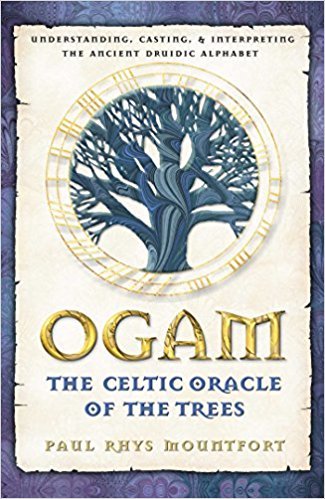
Ogam: The Celtic Oracle of the Trees: Understanding, Casting, and Interpreting the Ancient Druidic Alphabet A comprehensive and practical guide to the ancient oracle based on the alphabet of the Druids. • Describes the symbolism and mythology of the 20 "tree letters" and their magical correspondences. • Includes instructions on how to make your own Ogam divination sticks, cast the oracle, and perceive omens. • Provides historical background and bibliographic references to the Druidic mythology ruling this 1,500-year-old oracle. The ancient Ogam alphabet is a magical and mysterious script, the Celtic equivalent of the runes that can teach us about our fate and future. Named after woodland trees, Ogam's 20 "tree letters" all have unique wisdom to impart that is linked to figures and themes from Celtic mythology. The author addresses three major areas in this book: Ogamlore, the history of this 1500-year-old oracle of the Celtic Druids; Ogamfews, the meaning of the individual tree letters, their magic, characteristics, folklore, and related stories; and Ogamcasting, the practical art of Ogam divination, which includes spreads, castings, and how to create your own Ogam set. With these tools of ancient Celtic wisdom, readers will receive insights and guidance on how to maneuver through life's questions and challenges. click picture for link
11 notes
·
View notes
Text

Tree Magic: Magical Properties of Trees, Celtic Ogham, and More
We hear so much about the magic of herbs and crystals, but what about tree magic? Did you know our Celtic ancestors worshipped trees? Our ancestors believed trees housed powerful spirits and sometimes even gods themselves. Let’s dive into tree magic of the Celts, including the magical properties of trees and Ogham – the sacred tree alphabet. We’ll learn how to harness the potent energy of trees to make our own unique, green magic come to life.
DISCLOSURE: I may earn a small commission for my endorsement, recommendation, testimonial, and/or link to any products or services from this website. Your purchase helps support my work in bringing you information about the paranormal and paganism.
Tree Magic of the Ancestors
Do you have an undying love for trees? As a child, did you climb trees and spend hours playing in the forest? I know I did and still do. People in modern times spend 2/3 of their lifetime inside, which means most of the time they are away from nature. They’re away from the trees. Trees not only provide us with shade and oxygen, they also provide us with food, medicine, therapy, and magic. Our ancient Celtic ancestors knew this intimately. I believe our connection with trees is in our DNA and that tree magic can be reawakened within us when we are open to it.
Celtic Tree Magic
The Celts believed trees had consciousness. The Druid priesthood is said to have met in forest groves to conduct rituals and meetings. “Druid” is theorised to have originally been associated with “dryad” which was the Greek term for tree nymphs (spirits/gods). Because the Druids were so connected to the trees, it makes sense people from elsewhere would refer to them as tree spirits/people, of sorts. Woodhenges have been found all over England and Ireland, which is essentially the wooden equivalent of Stongehenge: a ring of wooden beams or trees used as sanctuary for ancient peoples. According to the Celtic tree calendar, the Celtic people honoured 21 sacred trees. These were: the alder, ash, apple, aspen, birch, blackthorn, elder, gorse, hawthorn, hazel, heather, holly, ivy, mistletoe, oak, reed, rowan, scots pine, vine, willow, and yew trees.
The World Tree & Yggdrasil
Trees feature as the central figure in hundreds of myths and creation stories all over the world. Yggdrasil is an ash tree in Norse mythology on which the god Odin hung himself and received the wisdom of the runes. Trees were seen as immortal, which makes sense because many of them live long past the lives of human beings. The holly and evergreen boughs we use to decorate at Christmas-time is a nod to the old beliefs in the immortality and longevity of trees. Yggdrasil is another of the World Trees from shamanic beliefs worldwide. The World Tree is a symbol of the three realms – the branches extend into the world of the gods, the trunk is the realm of the living, and the roots go underground into the world of the dead. Shamans work closely with tree magic on the spiritual planes when they “travel” up or down the World Tree to speak to the gods or retrieve lost souls.
The Ogham
Just as the Norse were given the elder futhark runes as a sacred alphabet, the Irish were given the Ogham tree alphabet. The Norse god Odin was given the Elder Futhark, while the Celtic god Ogma was given the Ogham, or so legend says. The Ogham is thought to have been used as an alphabet but also has sacred spiritual meaning. Each “letter” is representative of a sacred Celtic tree. In contrast to the Elder Futhark runes with their distinctive markings, the Ogham is a series of slashes. Both are used today for divination purposes. Find Ogham and runic divination sets online or in metaphysical shops.

Magical Properties of Trees
The magical properties of trees differ from tree to tree. If you want to learn tree magic, learn the magical properties of trees in your yard, neighbourhood, and local area. Here’s a list of the more popular trees and their magical properties:
Alder: banishing, divination, healing, protection, psychic intuition, resurrection
Apple: underworld, love, healing, goddess, garden, immortality
Ash: balance, communication, fertility, harmony, healing, knowledge, love divination, prophecy, protection from drowning, transition
Aspen: ancestry, astral planes, eloquence, endurance, healing, money, peace, rebirth, success
Banyan: abundance, divine connection, immortality, longevity, luck, protection
Bamboo: fortune, flexibility, longevity, luck, protection
Beech: ancestry, creativity, friendship, protection, second sight, wisdom
Birch: birth, blessings, creativity, crafting, fertility, goddess, healing, inspiration, love, protection, renewal
Blackthorn: authority, protection, strength, truth
Bottlebrush: abundance, banishing, energy, fertility, love, purification
Camphor: banishing, cleansing, divination, exorcism, healing, love, lust, prophecy
Cedar: balance, dreams, healing, immortality, longevity, prosperity, protection, purification, wisdom
Cypress: grieving, healing, longevity, protection, solace
Elder: blessings, creativity, fairies, good fortune, healing, magic, prosperity, protection, sleep, transition
Elm: birth, compassion, grounding, healing, intuition, love, protection, rebirth, wisdom
Fig: ancient ancestry, divination, enlightenment, fertility, good luck, love, prosperity
Fir: birth, far-sightedness, protection, prosperity, rebirth, vitality
Gorse: divination, fertility, prosperity, protection
Hawthorn: ancestry, cleansing, fairies, family, fertility, happiness, love, marriage, prosperity, protection, purification, wisdom
Hazel: creativity, divination, fertility, healing, knowledge, luck, protection, wisdom
Heather: changes, healing, luck, passion, protection, spirituality
Hemlock: cleansing, mysteries, shadow work
Hickory: abundance, discipline, flexibility, kindness, protection, strength, transformation
Holly: courage, death, divinity, healing, luck, protection, rebirth, unity
Juniper: cleansing, healing, love, protection
Magnolia: clarity, dreams, love, protection, truth
Maple: abundance, communication, divination, grounding, love, money, wisdom
Mimosa: happiness, love, protection, purification, sensitivity
Oak: ancestry, fertility, health, luck, prosperity, protection, strength, success, wisdom
Palm: abundance, fertility, flexibility, healing, potency, protection
Pine: abundance, emotions, fertility, good luck, healing, immortality, love, prosperity, protection, purification, regeneration
Rowan: blessings, centring, expression, fertility, grounding, healing, luck, music, protection, strength, writing
Sequoia: enlightenment, eternity, growth, valour, wisdom
Spruce: enlightenment, grounding, healing, intuition, protection, versatility
Willow: birth, fertility, flexibility, grieving, healing, intuition, knowledge, motherhood, protection, relationships, wisdom, wishes
Witch Hazel: healing, protection
Yew: ancestry, death, divination, flexibility, immortality, rebirth, strength
Many of the magical properties of trees are the same, including: healing, love, and protection. This is because trees have been used for thousands of years as food and medicine, as well as for shade and shelter.
NOTE: Do your research on each tree before handling as some can be toxic.
Making Your Own Tree Magic
First, in making your own tree magic, learn the trees in your local area. Go out in your yard, garden, or neighbourhood and identify the trees there. Don’t know the trees around you? Take photos and research online. Record your findings in your journal. Learn the trees’ magical properties, medicinal qualities, and scientific facts.
Then try meditating on the tree’s image. Find guided tree meditations for free on YouTube and elsewhere online. Record your experiences and visions in your journal.
Forage for berries, needles, thorns, bark, seeds, cones, acorns, etc. from local trees and use these items in your magic. Place on your altar. Put in spell bags. Weave into arts and crafts. Branches of trees can be fastened together to make symbols like stars, runes, and more. Your creativity with tree magic knows no bounds!
Don’t forget to just take time and get to know the tree’s energy and spirit. Visit it on your walks, sit under it, give offerings to the tree’s spirit. By placing your hands on the trunk and feeling the tree’s energy, you’ll forge a connection with the tree.
Read More about Tree Magic:
Whispers from the Woods by Sandra Kynes
The Magic of Trees by Tess Whitehurst
Celtic Tree Magic by Danu Forest
Ogam: Weaving Word Wisdom by Erynn Rowan Laurie
Tree of Salvation by G. Ronald Murphy
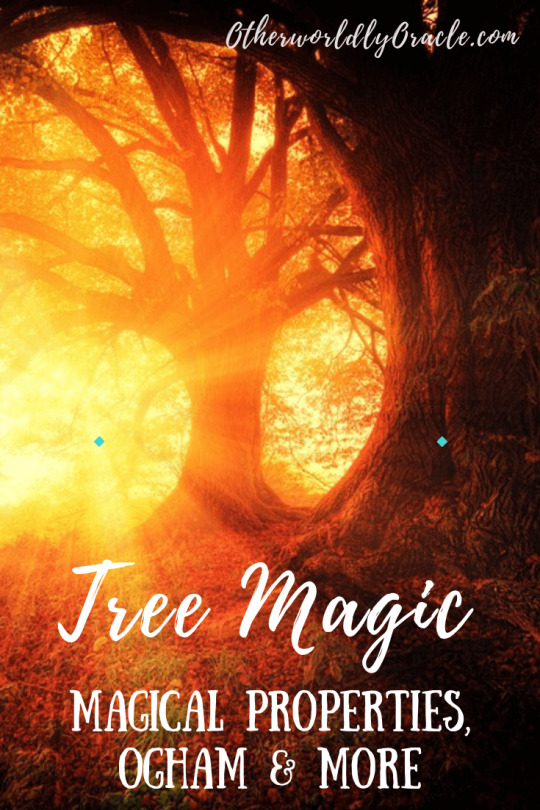
https://otherworldlyoracle.com/tree-magic/
0 notes
Photo
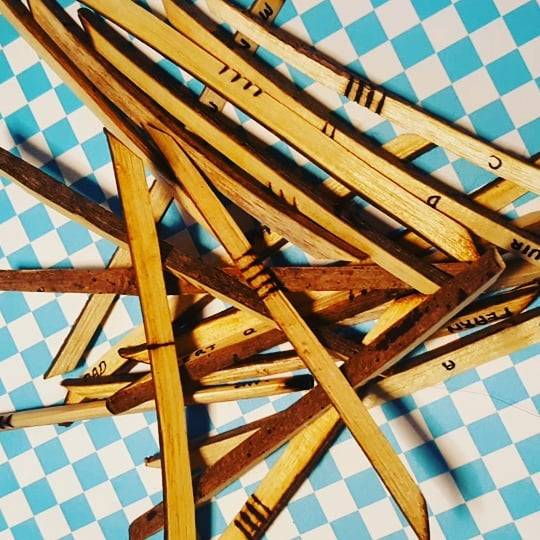
Celtic Wisdom Sticks - Ogam Oracle Have you had a reading with these? Comment below your experince ⬇️ These Wisdom Stick are inscribed in Ogam, an ancient Irish alphabetic script 🍀. No one knows who invented Ogam but there are three theories that all have wonderful stories. With the individual and unique grooves on each stick you can gain insight on a full year ahead within your path. It takes much practice to work with these sticks but the learning is worth the deep messages that come through to guide you and others. 🌳💞 #wisdom #ancientknowledge #guidance #celtic #irish #welsh #scottish #oracle #ogam #trees #nature #alphabet #ireland #divination #psychicsofinstagram https://www.instagram.com/p/BmYgkGMgzu8/?utm_source=ig_tumblr_share&igshid=1r4tbvbb1fho0
#wisdom#ancientknowledge#guidance#celtic#irish#welsh#scottish#oracle#ogam#trees#nature#alphabet#ireland#divination#psychicsofinstagram
0 notes
Text
Ogam Divination Meanings from a Linguistic Perspective

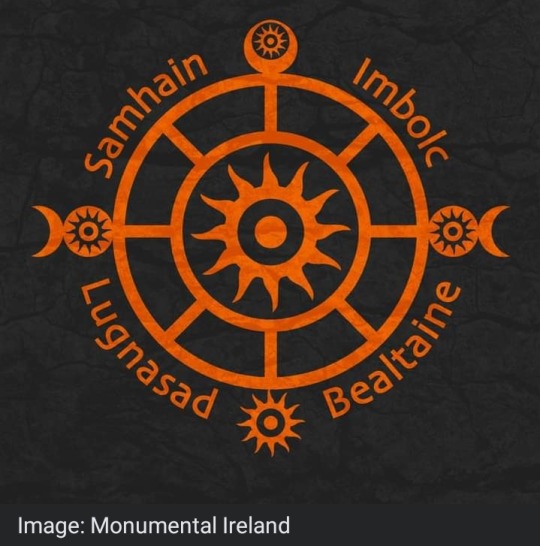
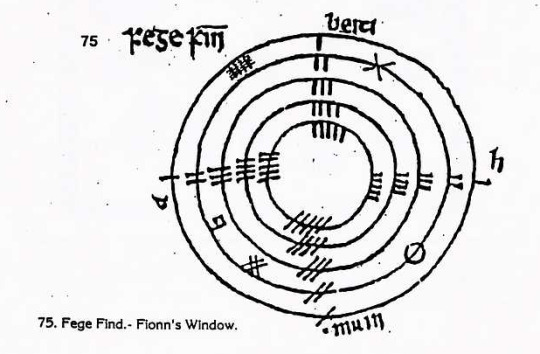
I want to prefix this guide by saying that I take a very different approach to ogam than many other practitioners do. I approach them from a linguistic perspective and gather context from the cultural perspective.
So if you are familiar with other divination meanings for the ogam these meanings may feel VERY different from the ones you've seen. That being said if you have questions about how I came to the meaning I did, please feel free to ask and I will explain the ogam in question to the best of my ability.
I align the aicme ('families') with the four fire festivals. This is my personal method, it is not based on any specific historical or linguistic data but it helps me bring more context to each feda.
Imbolg
beithe
strongly associated with protection
a warning to guard what is dear
a call to heal/healing
sense/essence of protection
luis
that from which healing comes
that which sustains ones way of life/community
the act of healing (gently)
fearn
fighting to protect
the first line of defence
fighting for the community
sustaining peace
sail
Otherworld protectors/ancestors
messages from the Otherworld
Otherworld gift
Reciprocal relationship with the Otherworld
nin
binders of the community
the bringing of peace (possibly through action/reprimand)
a wave can be gentle and soothing, but a wave can also be wild and sweep you your death, it is uncaring in these endeavors simply following its nature
especially emphasizing women
Bealtane
úath
point of life transition (male coming of age)
related to the unmarried male war bands
warrior skill building or related to warrior skills (cattle raiding, skirmishes, hunting, soldiering)
dair
the greatest knowledge
knowledge over the ways of life and death (druids)
both the skilled and that which is shaped by skill (think something along the lines of every master of a skill had to be shaped into a master by others)
tinne
seems to be related to a festival (possibly one lost to time, or a more general kind of festival like a market day)
a coming together
trade; commerce; dealings
items made by skilled craftsmen
coll
inspiration (imbas)
poetic knowledge
creation/creativity
cert
Ruler
power of the Otherworld
fír flathhemon
Lughnasadh
muin
the duty to strike down
righteous attack
beheading (related to head cult)
gort
lands that feed
‘home’
the place of providing
place of the ancestors?
gétal
opening wounds
for healing or valor
act of healing (difficult, painful, traumatic)
straif
secrets, mystery
seeking visions and dreams
possibly related to something ceremonial
ruis
extreme emotion (negative or positive, even a mix)
related to activities with others
Samhain
ailm
beginning
the first action/first to answer the call
naming/creating/birth
onn
patrolling what is yours
movement through what is familiar
movement over great distance
úr
ancestors/decedents
family (in the broad sense)/ community
ancestor burials
edad
bond of friendship
host/guest relationship
oath
idad
the eternal
that which always is
movement through time (maybe history, but also possibly the future)
#ogham#ogam#blackcrowing#divination#divination guide#irish reconstructionist#irish reconstructionism#celtic#irish#pagan#paganism#irish paganism#celtic paganism
71 notes
·
View notes
Text
Blackcrowing's Master Reading List

I have created a dropbox with pdfs I have gathered over the years, I have done my best to only allow access to documents which I found openly available through sites like JSTOR, Archive.org, or other educational resources with papers available for download.
That being said I ALSO recommend (I obviously have not read all of these but they are either in my library or I intend to add them)
📚 Celtic/Irish Pagan Books
The Morrighan: Meeting the Great Queens, Morgan Daimler
Raven Goddess: Going Deeper with the Morríghan, Morgan Daimler
Ogam: Weaving Word Wisdom, Erynn Rowan Laurie
Irish Paganism: Reconstructing Irish Polytheism, Morgan Daimler
Celtic Cosmology and the Otherworld: Myths, Orgins, Sovereignty and Liminality, Sharon Paice MacLeod
Celtic Myth and Religion, Sharon Paice MacLeod
A Guide to Ogam Divination, Marissa Hegarty (I'm leaving this on my list because I want to support independent authors. However, if you have already read Weaving Word Wisdom this book is unlikely to further enhance your understanding of ogam in a divination capacity)
The Book of the Great Queen, Morpheus Ravenna
Litany of The Morrígna, Morpheus Ravenna
Celtic Visions, Caitlín Matthews
Harp, Club & Calderon, Edited by Lora O'Brien and Morpheus Ravenna
Celtic Cosmology: Perspectives from Ireland and Scotland, Edited by Jacqueline Borsje and others
Polytheistic Monasticism: Voices from Pagan Cloisters, Edited by Janet Munin
📚 Celtic/Irish Academic Books
Early Medieval Ireland 400-1200, Dáibhí Ó Cróinín
The Sacred Isle, Dáithi Ó hÓgáin
The Ancient Celts, Berry Cunliffe
The Celtic World, Berry Cunliffe
Irish Kingship and Seccession, Bart Jaski
Early Irish Farming, Fergus Kelly
Studies in Irish Mythology, Grigory Bondarnko
Prehistoric Archaeology of Ireland, John Waddell
Archeology and Celtic Myth, John Waddell
Understanding the Celtic Religion: Revisiting the Past, Edited by Katja Ritari and Alexandria Bergholm
A Guide to Ogam, Damian McManus
Cesar's Druids: an Ancient Priesthood, Miranda Aldhouse Green
Animals in Celtic Life and Myth, Miranda Aldhouse Green
The Gods of the Celts, Miranda Green
The Celtic World, Edited by Miranda J Green
Myth and History in Celtic and Scandinavian Tradition, Edited by Emily Lyle
Ancient Irish Tales, Edited by Tom P Cross and Clark Haris Slover
Cattle Lords and Clansmen, Nerys Patterson
Celtic Heritage, Alwyn and Brinley Rees
Ireland's Immortals, Mark Williams
The Origins of the Irish, J. P. Mallory
In Search of the Irish Dreamtime, J. P. Mallory
The Táin, Thomas Kinsella translation
The Sutton Hoo Sceptre and the Roots of Celtic Kingship Theory, Michael J. Enright
Celtic Warfare, Giola Canestrelli
Pagan Celtic Ireland, Barry Raftery
The Year in Ireland, Kevin Danaher
Irish Customs and Beliefs, Kevin Danaher
Cult of the Sacred Center, Proinsais Mac Cana
Mythical Ireland: New Light on the Ancient Past, Anthony Murphy
Early Medieval Ireland AD 400-1100, Aidan O'Sullivan and others
The Festival of Lughnasa, Máire MacNeill
Curse of Ireland, Cecily Gillgan
📚 Indo-European Books (Mostly Academic and linguistic)
Dictionary of Indo-European Concepts and Society, Emily Benveniste
A Dictionary of Selected Synonyms in the Principle Indo-European Languages, Carl Darling Buck
The Horse, the Wheel and Language, David W. Anthony
Comparative Indo-European Linguistics, Robert S.P. Beekes
In Search of the Indo-Europeans, J.P. Mallory
Indo-European Mythology and Religion, Alexander Jacob
Some of these books had low print runs and therefore can be difficult to find and very expensive... SOME of those books can be found online with the help of friends... 🏴☠️
library genesis might be a great place to start... hint hint...
#books#book#resource#blackcrowing#pagan#paganism#irish mythology#celtic#irish paganism#irish polytheism#celtic paganism#celtic polytheism#celtic mythology#indo european#indo european mythology#historical linguistics#paganblr#masterlist#irish reconstructionism#irish reconstructionist#celtic reconstructionist#celtic reconstructionism#masterpost
95 notes
·
View notes
Text
Blackcrowing's Book Review Masterpost

Irish Paganism: Reconstructing Irish Polytheism, Morgan Daimler
The Book of the Great Queen, Morpheus Ravenna
The Druids, Peter Berresford Ellis
The Horse, the Wheel and Language, David W Anthony
Celtic Cosmology and the Otherworld, Sharon Paice MacLeod
The History of the Vikings: Children of Ash and Elm, Neil Price
A Practical Guide to Pagan Priesthood, Lora O'Brien
God Against the Gods, Jonathan Kirsch
A History of Pagan Europe, Prudence Jones & Nigel Pennick
A Guide to Ogam Divination, Marissa Hegarty
Polytheistic Monasticism, Jann Munin
Ireland's Immortals, Mark Williams
A Circle of Stones, Erynn Rowan Laurie
This is a growing list that will be added to as new reviews are made
#book review#books#book#resources#masterpost#masterlist#blackcrowing#paganism#pagan#polytheism#celtic mythology#celtic paganism#celtic polytheism#norse mythology#Norse Paganism#norse polytheism#indo european#proto indo european#history#linguistics
36 notes
·
View notes
Note
Hey, i hope you don't mind, but I was just wondering what your opinions on Steve Blamires are? I really enjoyed his book on the irish pagan magical system, and I was thinking of reading his book on Ogham, but I'm not really sure if he is a good source for that stuff. It seems you've been researching and working with Ogham for far longer than I have, so I thought I'd ask. Thanks :)
I've never actually read any of Steve Blamire's works. I've seen them but always found his choice of cover to be off putting (they look to me like the kinds of covers used by 'Celtic Shaman' types) so I've never picked one up myself.
From what I've been able to find about him he seems to have been very prominent in revivalist circles since the 80s, so clearly he resonates with people walking that particular path. As a hard reconstructionist I can't say that I think I'd enjoy his works myself, but for a revivalist he does seem to put in an admirable level of scholarship (which is MUCH MORE than could be said about most cir. 1980-2000s pagan authors!).
Lastly, I'm always INCREDIBLY leary of any author who discusses Ogam as a tree alphabet, since linguistically this is definitively not the case and yet is a concept that continues to circulate through pagan circles.
So my personal opinion is, its not for me and I myself would not recommend it on my own, but if his ideas and concepts resonate with you he does seem like an author with a healthy respect for the facts that are avaliable to us, even if he frames them in a revivalist light.
For a better understanding of Ogam based around the actual translations of the letter names I would recommend Ogam Weaving Word Wisdom by Erynn Rowan Laurie and A Guide to Ogam Divination by Marissa Hegarty. I have my personal reservations when it comes to each, but they are the two best candidates (in my opinion) for learning Ogam in the context of divination available on the market currently
6 notes
·
View notes
Text
✨️For those interested✨️
I'm currently working on compiling a divination guide for Ogam based on my own divination and the research I've done on the meanings over the years.
I'm not sure exactly when I'll have it all together in a way that I'm comfortable posting but I'm hoping to have it out at least by the time of Samhain
so stay posted!
8 notes
·
View notes
Text
Blackcrowing's Ogam Masterpost

Why Ogam is Definitely Not a Tree Alphabet
Beith
Luis
Fern
Sail
Nin
hÚath
Dair
Tinne
Coll
Cert
Muin
Gort
Gétal
Straif
Ruis
Ailm
Onn
Úr
Edad
Idad
Forefeda, What it is and Why I Don't Use it
My Divination Meaning Guide
#Ogam#ogam staves#ogham staves#divination#language#old irish#irish#irish myths#irish mythology#celtic mythology#celtic reconstructionism#blackcrowing#masterpost#ogham
43 notes
·
View notes
Note
An Introduction to Gaelic Polytheism by Marissa Hegarty is a really incredible book for anyone wanting an alternative to Lora O'Brien and co. It just came out last year, and it's the only source I've found on Gaelic paganism that I recommend without hesitation.
Extensive footnotes, sources for every claim, a "further reading" list, a pronunciation guide, outlines for prayers and rituals, tons and tons and tons of information on the history and culture, includes info from all three Gaelic nations, and pushes back on misinformation while still managing to avoid any dogmatic pagan nonsense about there being a "right" way to practice. And the author is inclusive. Highly recommend.
Thanks Anon! I'll have to check them out when I get some more book money
For those interested, their books are extremely affordable
An Introduction to Gaelic Polytheism $15
Saining for Gaelic Polytheist $8.99
A Guide to Ogam Divination $16.99
They are all recently published (2022) and carry one 5 star review on Amazon each. I can't find any additional information about the author.
8 notes
·
View notes
Text
Obscurity and confusion would appear to be at the fore for Muin in a reading, then. Not only is the meaning of the letter-name difficult to discern, but the gloss from one of Mac Ind Óc’s copies of the Bríatharogam would hint at camouflage and thickets, which — combined with our ‘variegated’ colour here — only serves to reinforce this whole feel. It may also be worth noting here that the dathogam itself gives the colour as mbracht (not simply brecht); a cosmetic initial m- has been added (cosmetic in the sense that it’s linguistically unnecessary here) so it will fit the letter, and this initial m- results in the sound of the ‘b’ in brecht being silenced (or obscured, as one might say…). The potential for confusion between brecht and bricht would also reinforce this sense of confusion and obscurity, but it might also suggest a magical (if not a spiritual?) undercurrent, too."
– A Guide to Ogam Divination by Marissa Hegarty.
0 notes
Text
Perhaps more to the point, though (as Kelly also notes), the fact that the apple was so highly valued also explains why this tree was so prominent throughout the myths and the literature as a whole. More often than not, the tree is depicted as having close associations with the otherworld, with perhaps the most obvious example here being Emain Ablach, the legendary ‘Emain of the Apple-Trees’ (where emain can refer to a fairy fort or region), an otherworldly region that’s described in idyllic terms in the story of Immram Brain (‘The Voyage of Bran’), and said to be ‘the Tara of Manann[án], without disgrace,’ in a seventeenth century poem that also insists:
The apple Emhain of the yews,
Smooth, top-coloured are its trees;
A new place under the black thorn,
In which was nursed Lugh, descendant of the poet.
These traditions clearly suggest that Manannán is the ruler of this realm, where the idea that Emain Ablach was also home to Lug as a child is referring to a tradition (that developed at a relatively late period) whereby Manannán was his foster-father.
— A Guide to Ogam Divination by Marissa Hegarty.
#int er est ing#the quotes mention of yew and blackthorn has some wheels turning#Ceirt#aball#Ogham#Ogam
1 note
·
View note